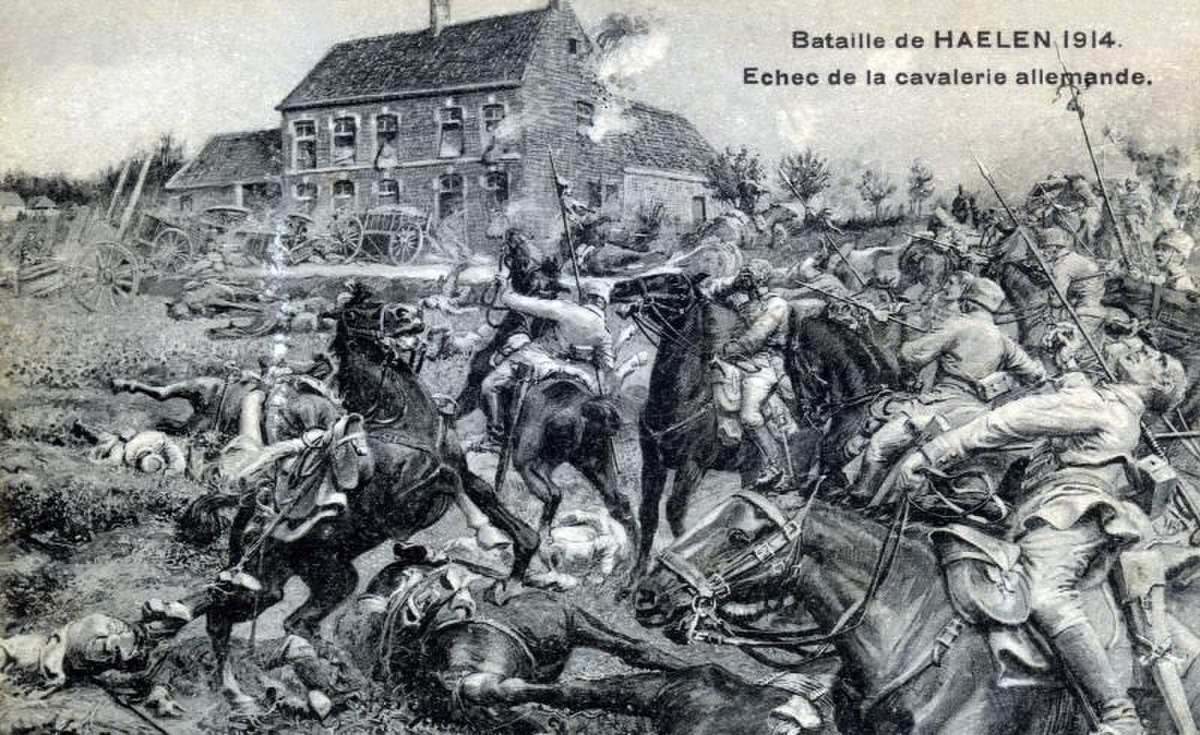
German invasion of Belgium
BelgiumThe German invasion of Belgium was a military campaign which began on 4 August 1914. Earlier, on 24 July, the Belgian government had announced that if war came it would uphold its neutrality. The Belgian government mobilised its armed forces on 31 July and a state of heightened alert (Kriegsgefahr) was proclaimed in Germany. On 2 August, the German government sent an ultimatum to Belgium, demanding passage through the country and German forces invaded Luxembourg. Two days later, the Belgian government refused the demands and the British government guaranteed military support to Belgium. The German government declared war on Belgium on 4 August; German troops crossed the border and began the Battle of Liège.
German military operations in Belgium were intended to bring the 1st, 2nd and 3rd Armies into positions in Belgium from which they could invade France, which, after the fall of Liège on 7 August, led to sieges of Belgian fortresses along the river Meuse at Namur and the surrender of the last forts (16–17 August). The government abandoned the capital, Brussels, on 17 August and after fighting on the Gete river, the Belgian field army withdrew westwards to the National Redoubt at Antwerp on 19 August. Brussels was occupied the following day and the siege of Namur began on 21 August.
After the Battle of Mons and the Battle of Charleroi, the bulk of the German armies marched south into France, leaving small forces to garrison Brussels and the Belgian railways. The III Reserve Corps advanced to the fortified zone around Antwerp and a division of the IV Reserve Corps took over in Brussels. The Belgian field army made several sorties from Antwerp in late August and September to harass German communications and to assist the French and the British Expeditionary Force (BEF), by keeping German troops in Belgium. German troop withdrawals to reinforce the main armies in France were postponed to repulse a Belgian sortie from 9 to 13 September and a German corps in transit was retained in Belgium for several days. Belgian resistance and German fear of francs-tireurs, led the Germans to implement a policy of terror (schrecklichkeit) against Belgian civilians soon after the invasion, in which massacres, executions, hostage-taking and the burning of towns and villages took place and became known as the Rape of Belgium.
